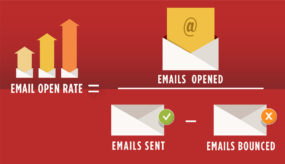Today is my 51st birthday, and that’s a great excuse to share 51 pieces of advice and observations about the crazy wonderful world of fundraising.
In no particular order…
- If you’re not occasionally amazed that you can send out letters and emails to people and they send you money back, you’re not hooked up right.
- Pay close attention to all surveys and research on fundraising that are based on donor behavior. Put all surveys and research on fundraising that report on what donors say they will do into your “to read later” pile.
- Every piece of fundraising should have a donor-shaped hole in it.
- Fundraising is harder for younger people because they must create materials for an audience that’s primarily 40 to 50 years older than they are.
- The ability to differentiate between different types of fundraising, and different audiences for fundraising, is a sign of fundraising mastery.
- The older I get, I see that success in major donor fundraising is more manageable and measurable than I ever suspected.
- Large nonprofits don’t send out a lot of appeals and e-appeals because they are big. They are big because they send out a lot of appeals and e-appeals.
- The “stories an organization tells itself” about Fundraising have a greater effect on how much money they raise than the stories they tell their donors.
- Work hard to create repeatable “fundraising assets.” Create “fundraising art projects” – which will be used once – only when necessary.
- Most nonprofits should mail their donors two more times than they did last year.
- A nonprofit website is only as effective as the questions asked when work starts. If you start with the question, “How can we tell people all about our work?” you’ll get one type of website. If you ask, “How can we make it easy for people to do something?” you’ll get another type of website.
- Each time I hear a song by Taylor Swift I think, “She’d make a great direct response fundraising writer.” I’m aware this is a little weird.
- The only good news in appeal letters should be that the donor’s gift will solve the problem. These are hard words to live by, but incredible for long-term fundraising success.
- Nonprofits have egos. And they do not like to be vulnerable. But vulnerability is the path to deeper relationship with donors.
- In nonprofit fundraising, your brand being relevant to a given situation/context is more important than your brand being consistent across all situations and contexts.
- There are some differences between direct mail for mass donors and direct mail for major donors, but not as many as most people believe.
- My ability to be compassionate is increasing as I age.
- If you’re not regularly getting complaints and unsubscribes, you’re leaving a lot of money on the table. Complaints are a fee you pay to achieve a goal, not a fine you pay because you’ve done something wrong.
- The most effective Fundraisers and fundraising organizations have a tolerance for pain. They endure the pain of creating messages that internal audiences don’t like, and the pain of sharing real needs, and the difficulty of being other-centered. Fundraisers endure those pains because they know that they will raise more money for the organization if they do.
- Most donors care far more about what their gift did than they care about what your organization has been up to.
- Every generation creates a new philosophy for why they shouldn’t share the need.
- I believe that most critiques of donor-centricity are actually critiques of “donor centricity taken way too far.” Donor centricity, when exercised properly, has healthy boundaries.
- For many of an organization’s donors, the fundraising you send them IS the relationship. So how are you going to show up in that relationship?
- All strategy is sacrifice.
- Fundraising doesn’t create tension in donors, it reveals tension they already hold.
- Fundraising is so much better than “news.” When fundraising reveals tension in a donor between the way the world is and the way they want the world to be, fundraising presents the donor with something impactful they can do right now to help. News just moves on to the next story.
- Letters that look like personal letters tend to perform better.
- When people critique fundraising by saying, “this doesn’t sound like me/us,” I always think, “Well, if ‘sounding like you’ were the key, wouldn’t you be raising a lot more money than you currently are?”
- Organizations that are optimistic about fundraising raise more money than organizations that are pessimistic about fundraising.
- If you want a donor to do something, ask her to do something that’s actually doable. You have a greater chance of success asking a donor to “provide one new library book” than you will asking a donor to “provide new library books to local children.”
- Fundraising success is much more a knowledge issue than a talent issue. This is particularly true in direct response fundraising.
- There will always be fewer complaints than the organization fears there will be. And the complaints that do come in will be less meaningful and impactful than organizations fear they will be. And about 1/3 of complaints can be turned into donations on the spot if the person hearing the complaint is prepared.
- In general, having a ratio of about 2 asks (appeals) for every one report (newsletters) seems to maximize revenue and retention.
- I’ve never met a nonprofit whose fundraising failed because they were talking to the wrong people. But I’ve met lots of nonprofits whose fundraising failed because they were talking to people about the wrong things.
- People tend to overvalue the importance of one piece of fundraising, and undervalue the total importance of all their fundraising.
- Ineffective fundraising is about the organization and its processes. Effective fundraising is about the donor and her values.
- The ability to get to the point quickly is gold in direct response fundraising.
- Most fundraising isn’t written to persuade, it’s written not to offend.
- A powerful piece of fundraising causes the recipient to have to choose; am I in right now or am I out?
- Donors’ generosity during the pandemic is one of the most meaningful things I’ve ever seen.
- An organization handing you the keys to their fundraising is one of the biggest privileges you can be given.
- Fundraising, done properly, takes a toll on the Fundraiser. You have to regularly expose yourself to tragedy and injustice and need, and then you have to share those things with donors. Thankfully, the consequences of doing so are incredible instances of generosity and goodness.
- The first sentence of anything you write is the onramp to the rest of the piece. If that first sentence is long or complex, fewer people will read. When fewer people read, fewer people give.
- It is so hard to keep the main thing the main thing.
- Irony is when a person who is an amateur at fundraising tells me that fundraising I’ve made is “not professional.”
- There are no sure things in fundraising. Everything is a bet. Some bets are more likely to work than others.
- Using two spaces between sentences is a small, donor-centered bet. Having two spaces between sentences is quantifiably easier for people to read, and it’s more familiar to older donors. Regardless of personal preference, if using two spaces between sentences helps more people read your fundraising, isn’t that a bet worth making?
- If you want to be effective at fundraising today and in the future, get good at getting attention. It’s getting harder and harder to get donors’ attention.
- In my whole career I’ve seen one instance of the data showing that the organization was asking too often. One.
- Effective direct response fundraising is so hard to create because it’s other-centered: it’s more about the donor and her values, and the beneficiaries, than it is about the organization sending it.
- The ability to do fundraising as a career is a gift.
Author Profile
Steven Screen is Co-Founder of The Better Fundraising Company and lead author of its blog. With over 30 years' fundraising experience, he gets energized by helping organizations understand how they can raise more money. He’s a second-generation fundraiser, a past winner of the Direct Mail Package of the Year, and data-driven.









Happy birthday and thank you for sharing so many great tips and information!
Happy Birthday, Steven! Thank you for so generously teaching and guiding us in the fundraising world!